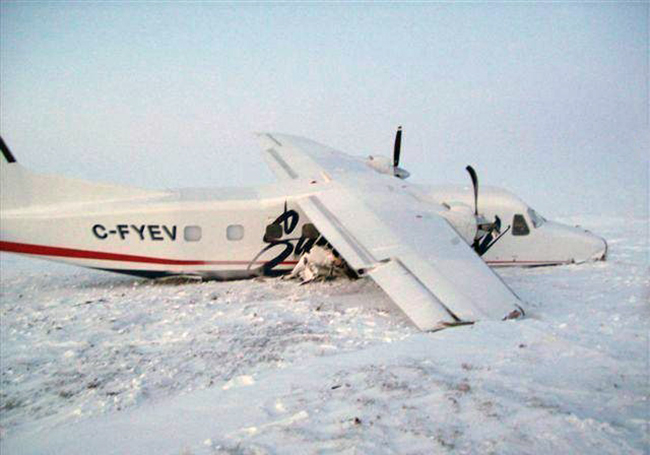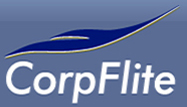Country
Crash of a Dornier DO228-202K in Viña del Mar: 2 killed
Date & Time:
Sep 9, 2013 at 0950 LT
Registration:
CC-CNW
Survivors:
No
Schedule:
Coquimbo - Viña del Mar
MSN:
8063
YOM:
1986
Crew on board:
2
Crew fatalities:
Pax on board:
0
Pax fatalities:
Other fatalities:
Total fatalities:
2
Captain / Total hours on type:
12431.00
Aircraft flight hours:
25012
Circumstances:
The crew departed Coquimbo on a positioning flight to Viña del Mar to pick up passengers who need to fly to a mining area located in Los Perlambres. As the ILS system was inoperative, the crew was forced to complete a non-precision approach to runway 05. The visibility was poor due to foggy conditions. On final approach, while the aircraft was unstable, the crew descended below the MDA until the aircraft collided with power cables and crashed in an open field located about 1,8 km short of runway. The aircraft was destroyed upon impact and both pilots were killed.
Probable cause:
Controlled flight into terrain following the decision of the crew to continue the approach below the MDA without visual contact with the runway until the aircraft impacted ground.
The following contributing factors were identified:
- Failure to apply the concepts of Crew Resource Management (CRM).
- Failure to use checklists.
- Failure to brief the maneuvers to be executed.
- Loss of situational awareness of the crew.
- Failure to keep a sterile cockpit during approach.
- Complacency and overconfidence of the pilots.
- Unstabilized instrument approach.
- Lack and/or non-use of equipment and systems to support the flight.
The following contributing factors were identified:
- Failure to apply the concepts of Crew Resource Management (CRM).
- Failure to use checklists.
- Failure to brief the maneuvers to be executed.
- Loss of situational awareness of the crew.
- Failure to keep a sterile cockpit during approach.
- Complacency and overconfidence of the pilots.
- Unstabilized instrument approach.
- Lack and/or non-use of equipment and systems to support the flight.
Final Report:
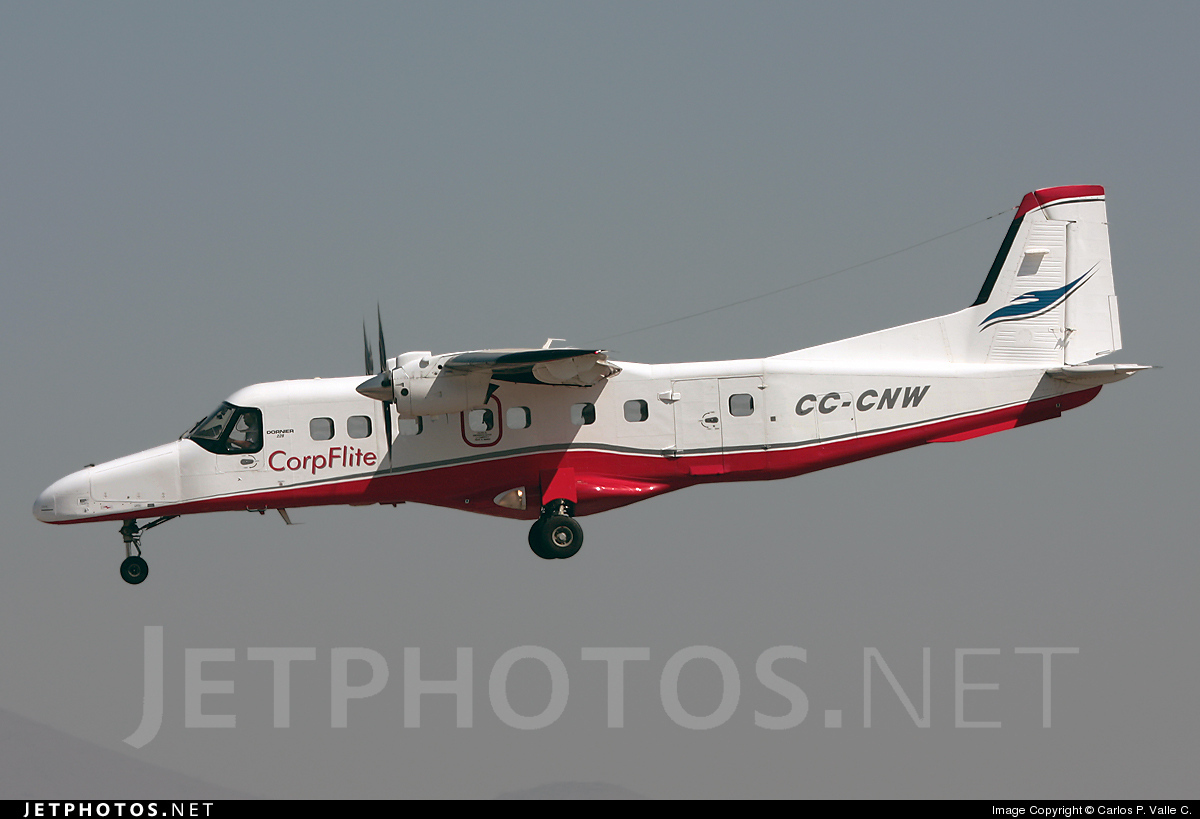
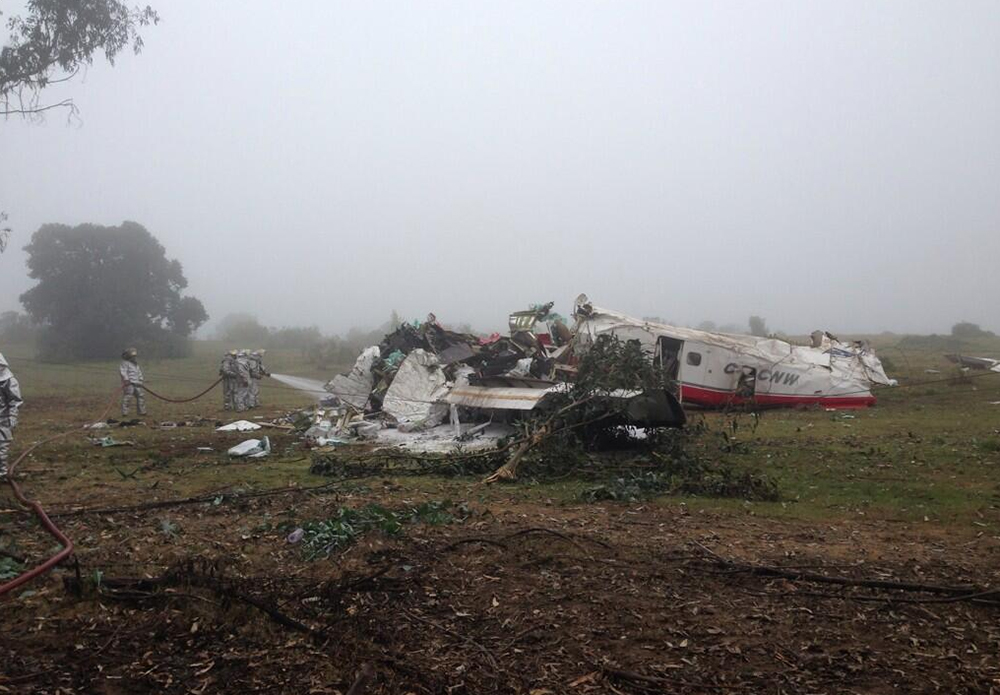
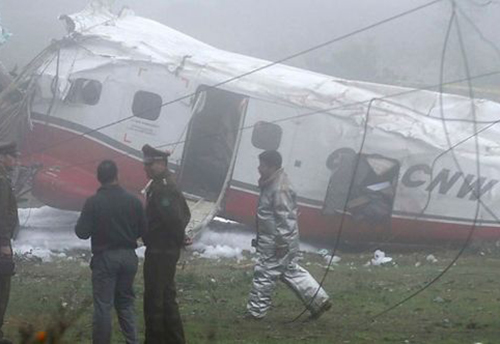
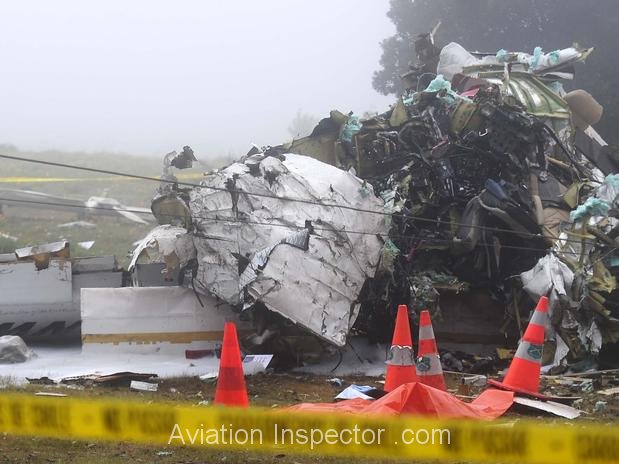
Crash of a Dornier DO228-202K in Simikot
Date & Time:
Jun 1, 2013 at 0714 LT
Registration:
9N-AHB
Survivors:
Yes
Schedule:
Nepalgunj - Simikot
MSN:
8169
YOM:
1989
Crew on board:
2
Crew fatalities:
Pax on board:
5
Pax fatalities:
Other fatalities:
Total fatalities:
0
Circumstances:
The twin engine aircraft was completing a charter flight from Nepalgunj to Simikot, carrying two pilots and five passengers. On approach to Simikot Airport, ground fog and low visibility forced the crew to initiate a go-around procedure. A second and a third attempt to land were abandoned few minutes later. During the fourth attempt to land, without sufficient visual contact with the ground, the crew continued the approach, passed through the clouds when the aircraft landed hard short of runway 28. Upon impact, the undercarriage were torn off and the aircraft slid for few dozen metres, veered to the right and came to rest on the right side of the runway with its left wing broken in two. All seven occupants escaped uninjured and the aircraft was damaged beyond repair.
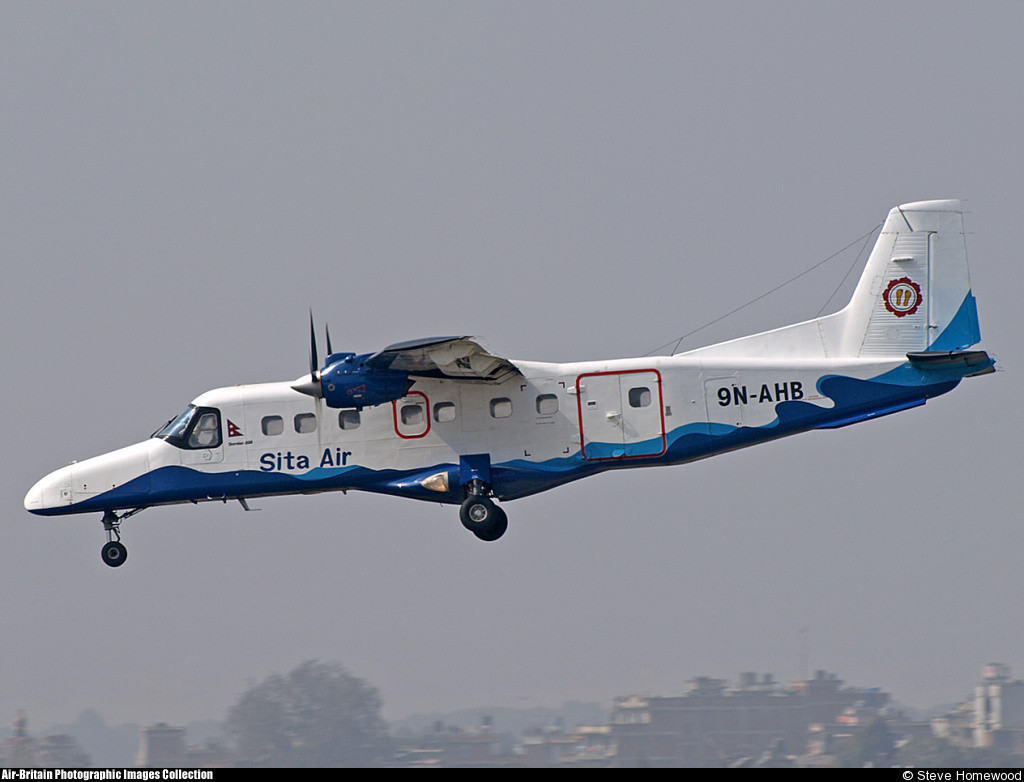
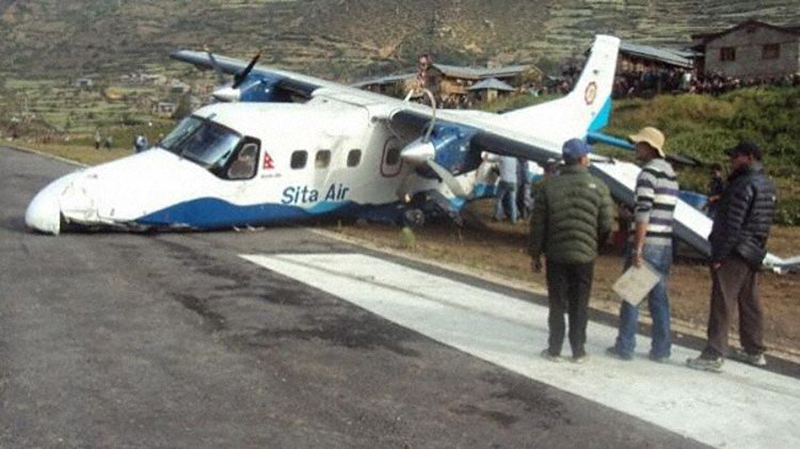
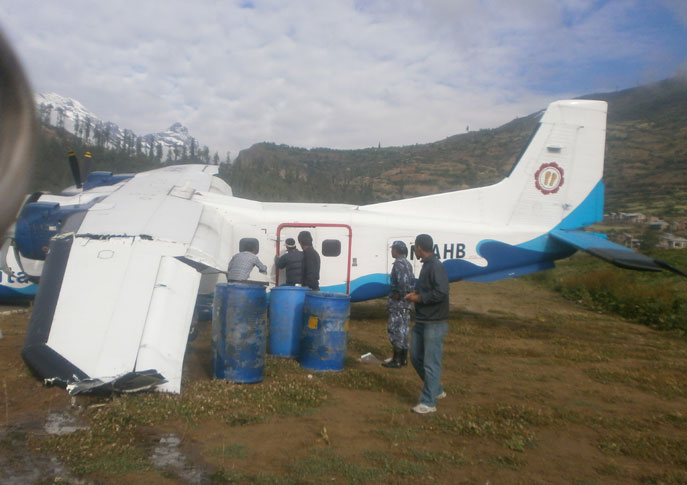
Crash of a Dornier DO228-202 in Kathmandu: 19 killed
Date & Time:
Sep 28, 2012 at 0618 LT
Registration:
9N-AHA
Survivors:
No
Schedule:
Kathmandu - Lukla
MSN:
8123
YOM:
1987
Flight number:
SIT601
Crew on board:
3
Crew fatalities:
Pax on board:
16
Pax fatalities:
Other fatalities:
Total fatalities:
19
Captain / Total hours on type:
7112.00
Copilot / Total hours on type:
519
Circumstances:
A Dornier 228 aircraft, registration 9N-AHA, was planned to operate a flight from Tribhuvan International Airport (TIA), Kathmandu, to Tensing/Hillary Airport, Lukla with 16 passengers and 3 crews. The Commander was the Pilot Flying (PF) which was in accordance with common practice for flight crews operating this route. The 0020Z METAR for TIA reported calm wind, 3,000 m visibility in mist, scattered cloud at 2,000 ft AAL, broken cloud at 10,000 ft AAL, a temperature of 19° C and a QNH of 1017 HPa. ATC broadcast a change in the QNH to 1018 HPa at 0029 hrs. At 0028 hrs (0613 am), the Co-pilot asked ATC for taxi clearance and 9N-AHA taxied towards Intersection 2 for Runway 20. While taxiing towards the runway the flight crew carried out the before takeoff checklist during which the Commander confirmed that Flaps 1 was set and all four booster pumps were ON. There was no emergency brief or discussion about the reference speeds to be used during the takeoff. The flight crew changed frequency and contacted the tower controller who gave them clearance to enter Runway 20 from the intersection and wait for clearance to takeoff. The Commander asked for the line-up checks to be completed during which the Speed Lever was selected to HIGH. After lining up, the Commander said "THERE IS A BIRD" and, three seconds later "I WILL TAKE FLAPS TWO" which was acknowledged by the co-pilot. The aircraft was cleared for departure and began its takeoff run at 0032 hrs. Two seconds after beginning the takeoff roll, the Commander said "WATCH OUT THE BIRD". The Co-pilot called "50 KNOTS " as the aircraft approached 50 kt and the Commander replied "CHECK". Two seconds later, the co-pilot called "BIRD CLEAR SIR" as the aircraft accelerated through 58 kt. Approaching 70 kt, approximately 13 kt below V1 and Vr , the first officer called "VEE ONE ROTATE". The aircraft began to rotate but did not lift off the ground and the nose was briefly lowered again. As the aircraft reached 86 kt, it lifted off the ground and the landing gear was raised immediately. As the aircraft began to climb, it accelerated to 89 kt over approximately 2 seconds. It continued to climb to 100 ft above the runway over the next 11 seconds but, during this time, the speed decreased to 77 kt. The aircraft then flew level for 14 seconds during which time the following occurred: the speed decreased to 69 kt; the air traffic controller asked "ANY TECHNICAL?" to which the pilot replied "[uncertain]….DUE BIRD HIT"; it's heading changed slowly from 200 °M to approximately 173 °M; and the stall warning was triggered for three seconds as the aircraft decelerated through 71 kt. Two seconds after the stall warning ended, it was triggered again for approximately six seconds with the airspeed at 69 kt. The aircraft began a gentle descent at 69 kt with the stall warning sounding and the rate of turn to the left increased rapidly. It departed controlled flight, most probably left wing low, and crashed into a small open area 420 m south-east of the end of Runway 20. A runway inspection found the remains of a bird, identified as a "Black Kite", at a position 408 m from Intersection 2. No bird strike was reported in relation to any other departure.
Probable cause:
Causal Factors:
The investigation identified the following causal factors:
1. During level flight phase of the aircraft, the drag on the aircraft was greater than the power available and the aircraft decelerated. That resulted in excessive drag in such critical phase of ascent lowering the required thrust. The investigation was unable to determine the reason for the reduced thrust.
2. The flight crew did not maintain the airspeed above the stall speed and there was insufficient height available to recover when the aircraft departed controlled flight.
Contributory Factors:
The investigation identified the following contributory factors:
1. The flight crew did not maintain V2 during the climb and so the power required to maintain the level flight was greater than it would otherwise have been.
2. The flight crew did not maintain the runway centreline which removed the option of landing the aircraft on the runway remaining.
The investigation identified the following causal factors:
1. During level flight phase of the aircraft, the drag on the aircraft was greater than the power available and the aircraft decelerated. That resulted in excessive drag in such critical phase of ascent lowering the required thrust. The investigation was unable to determine the reason for the reduced thrust.
2. The flight crew did not maintain the airspeed above the stall speed and there was insufficient height available to recover when the aircraft departed controlled flight.
Contributory Factors:
The investigation identified the following contributory factors:
1. The flight crew did not maintain V2 during the climb and so the power required to maintain the level flight was greater than it would otherwise have been.
2. The flight crew did not maintain the runway centreline which removed the option of landing the aircraft on the runway remaining.
Final Report:
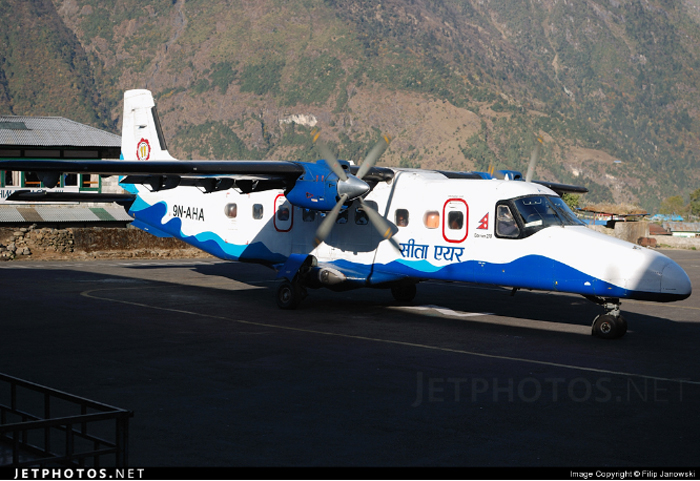
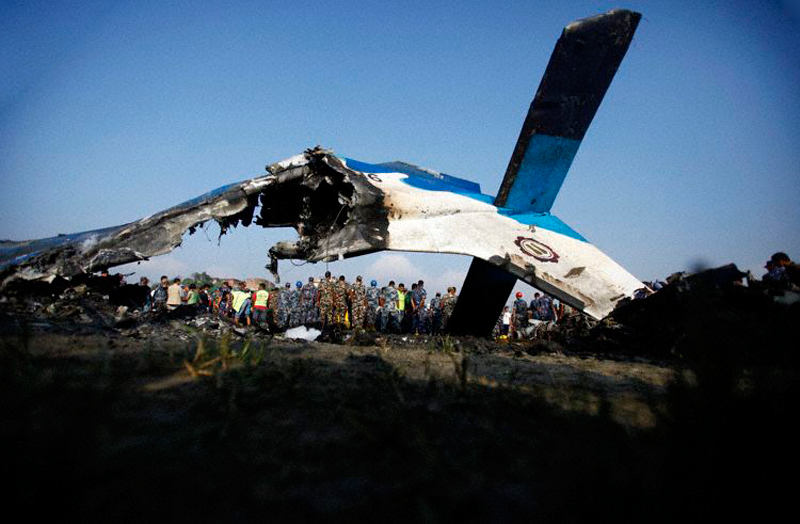
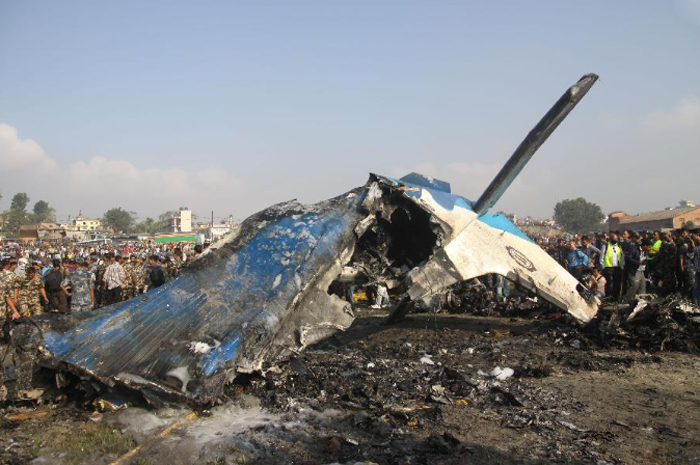
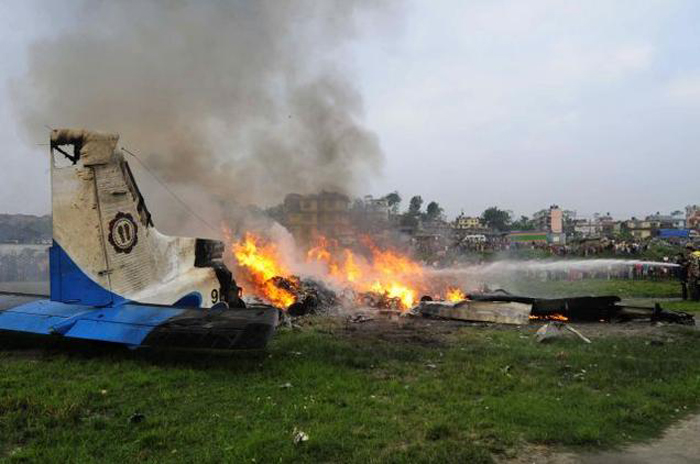

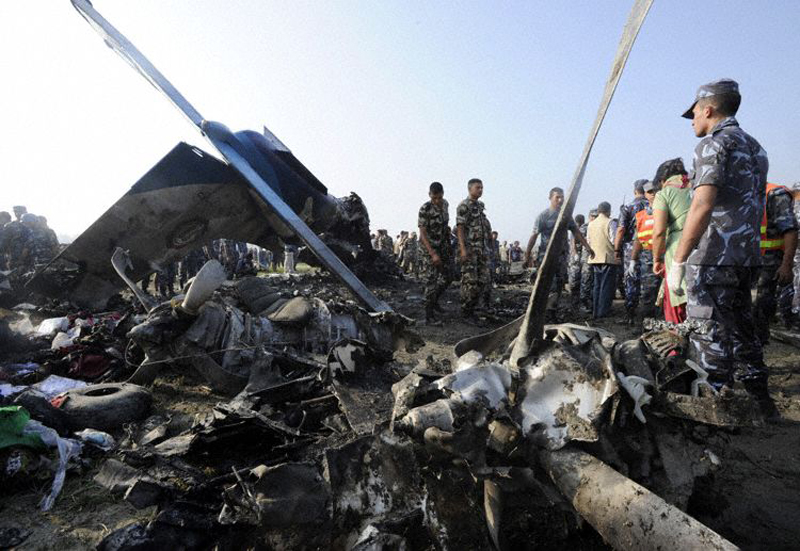
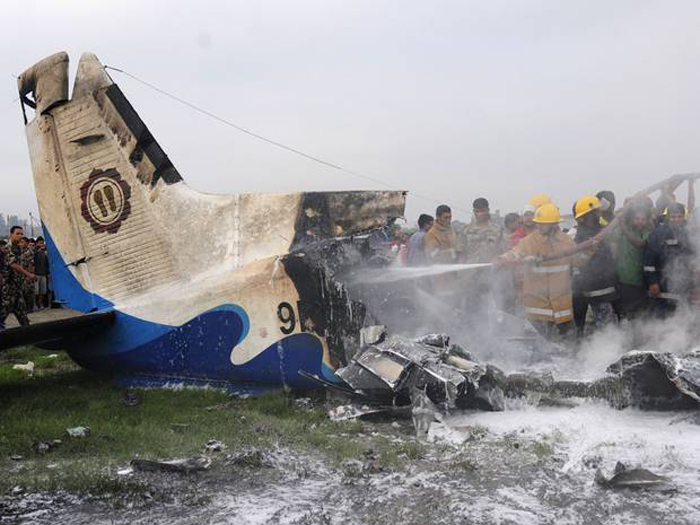
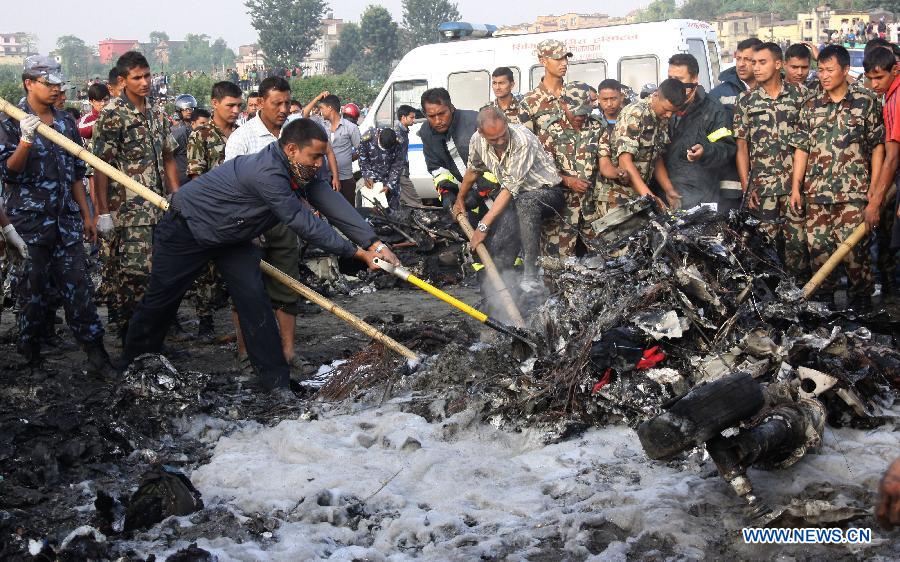
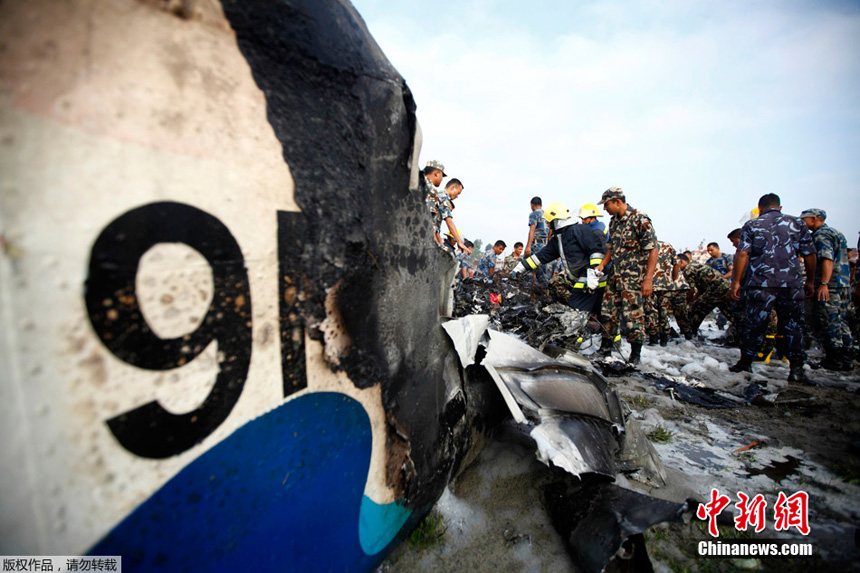
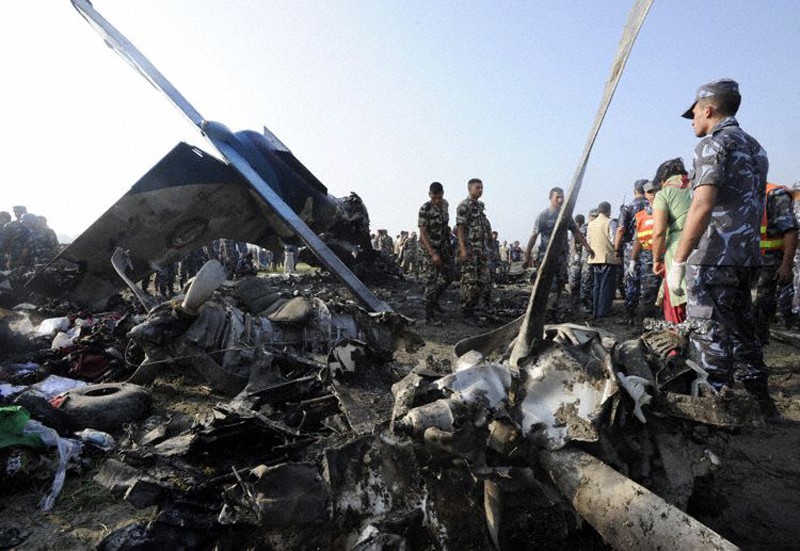
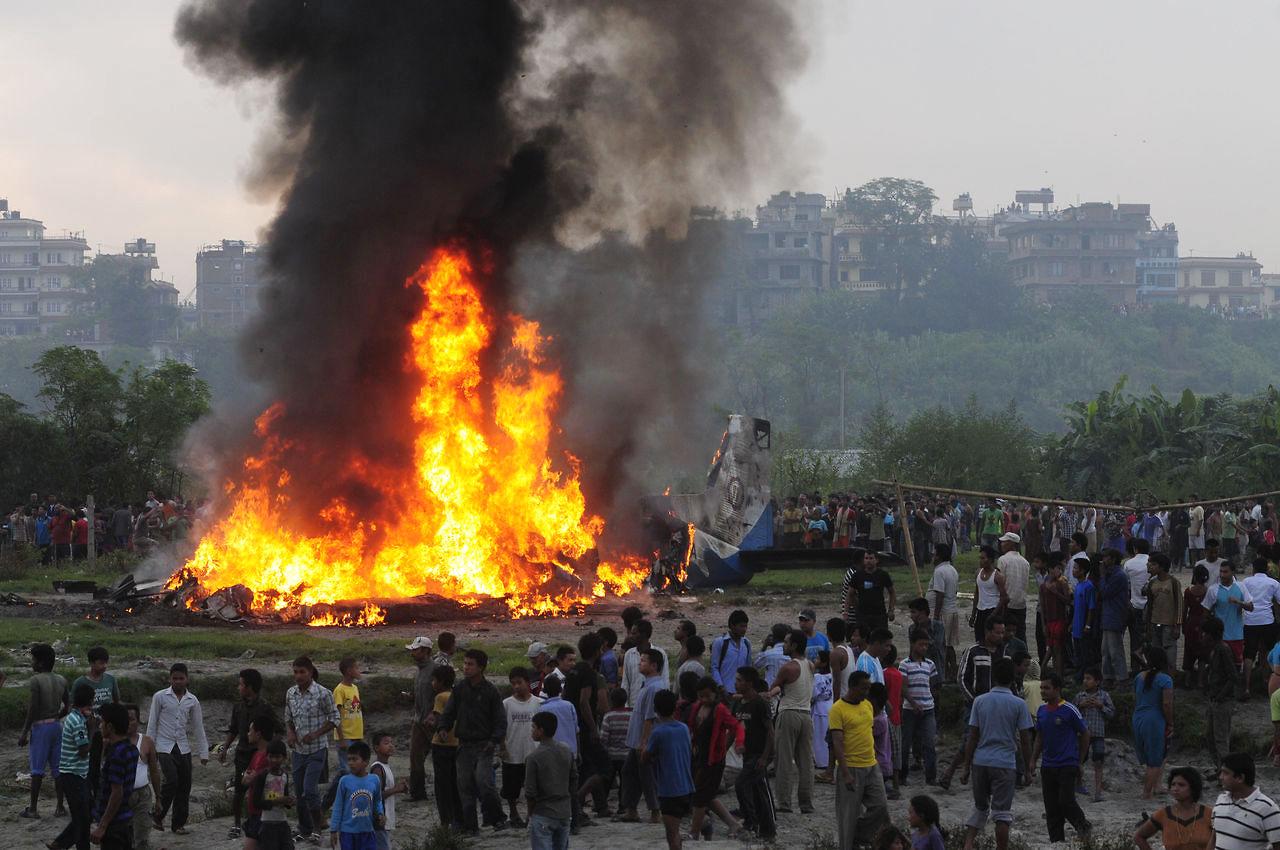
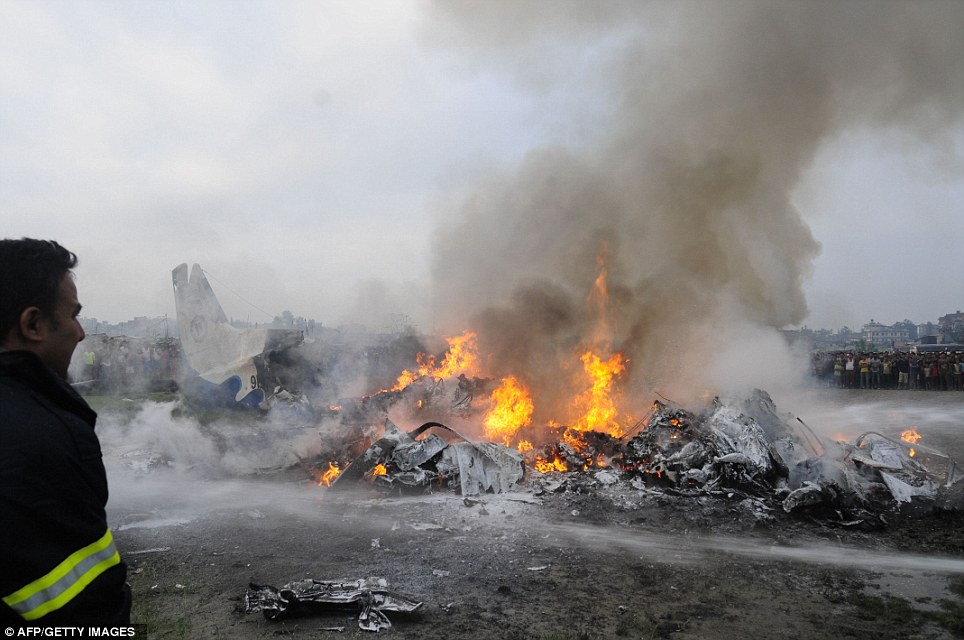
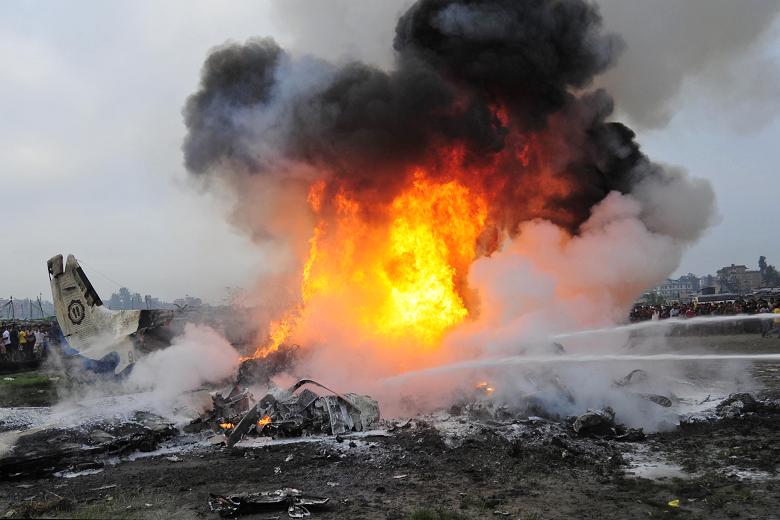
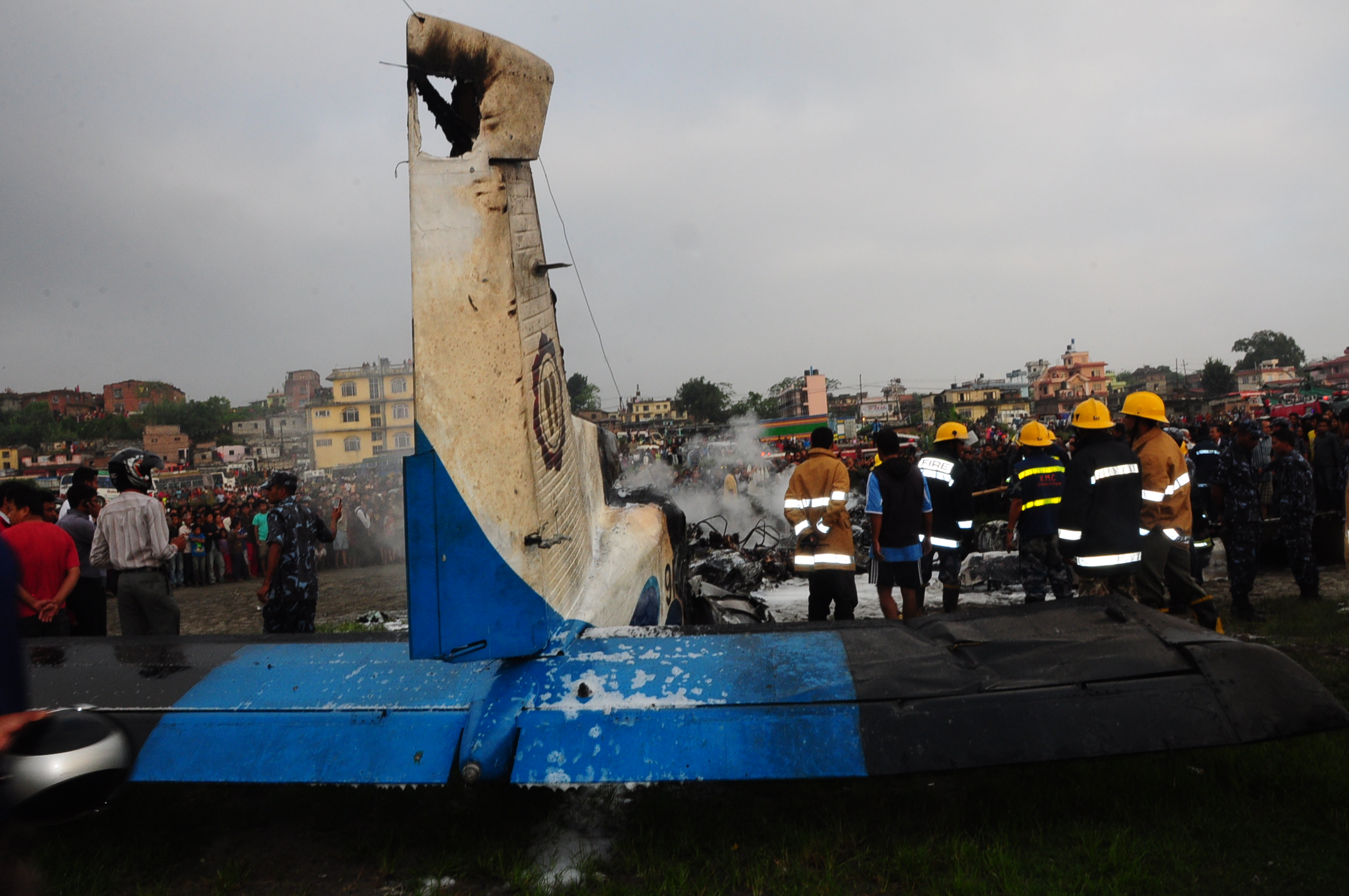
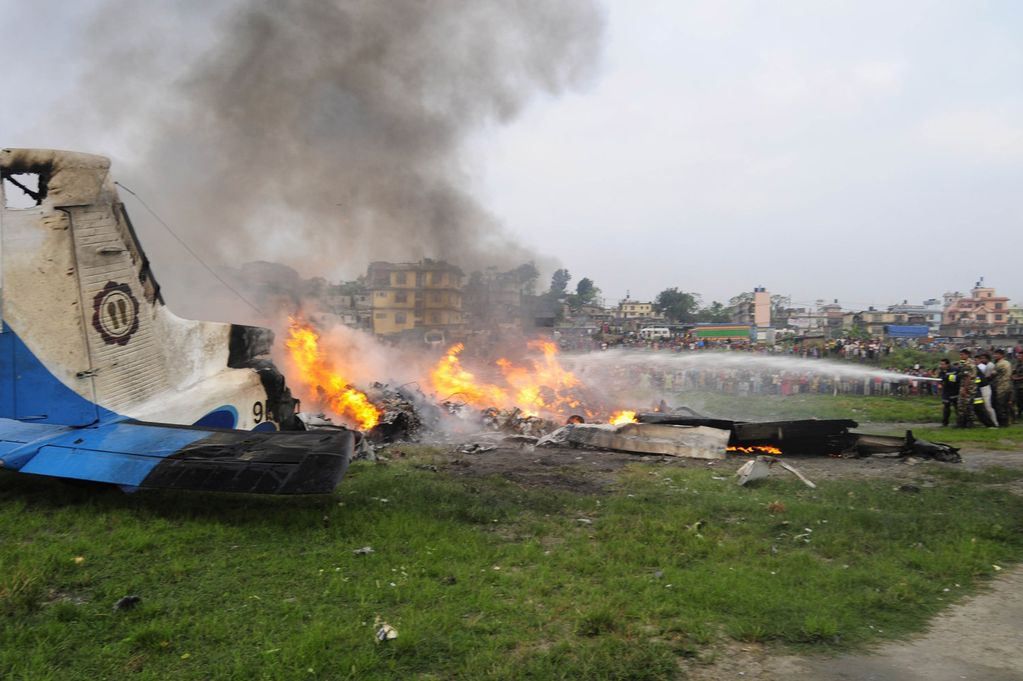

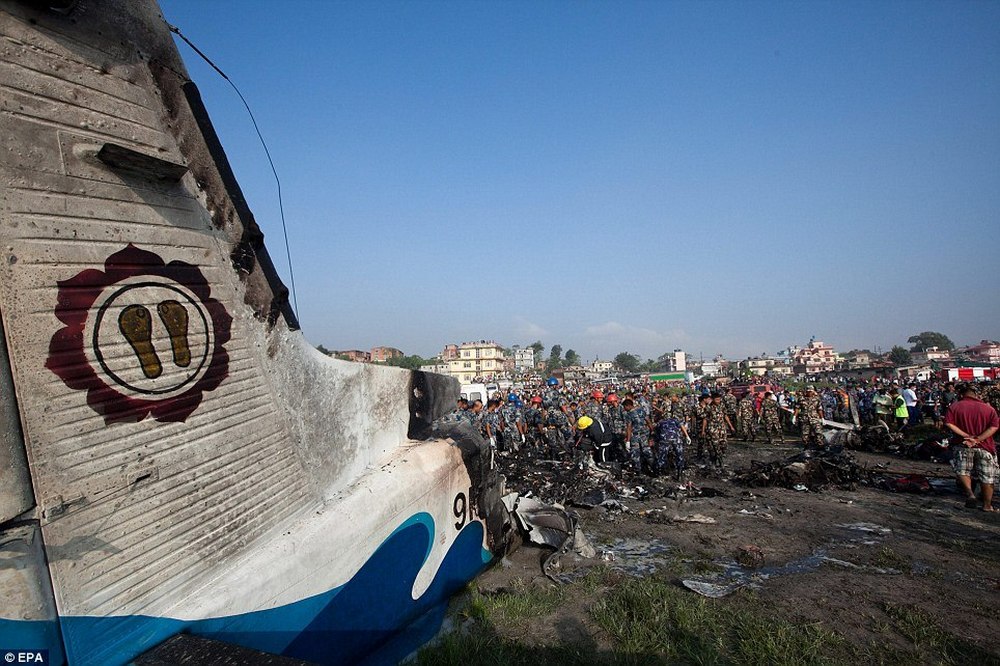
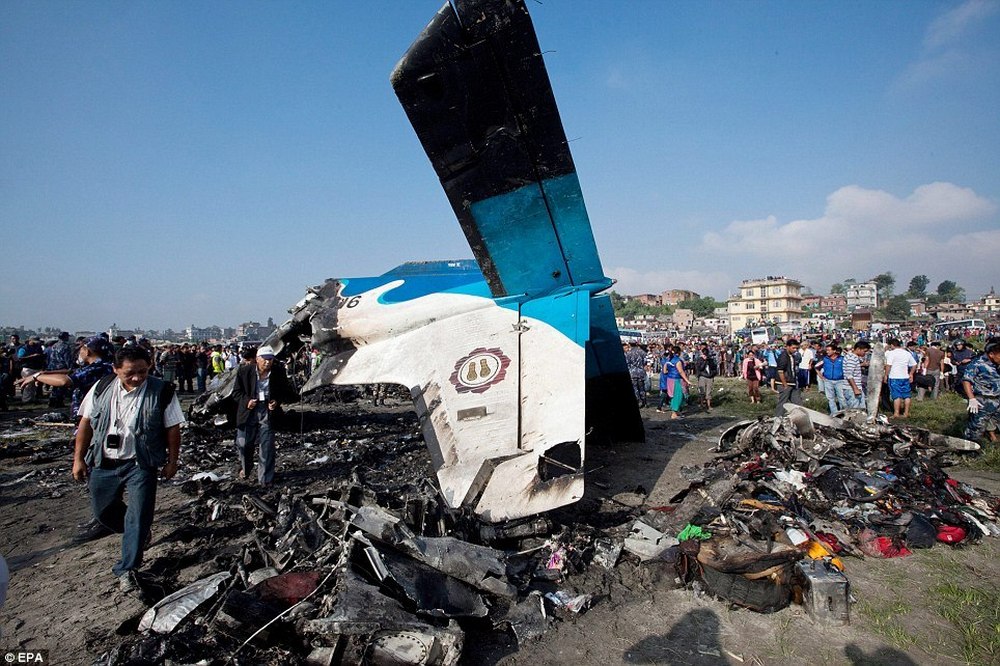
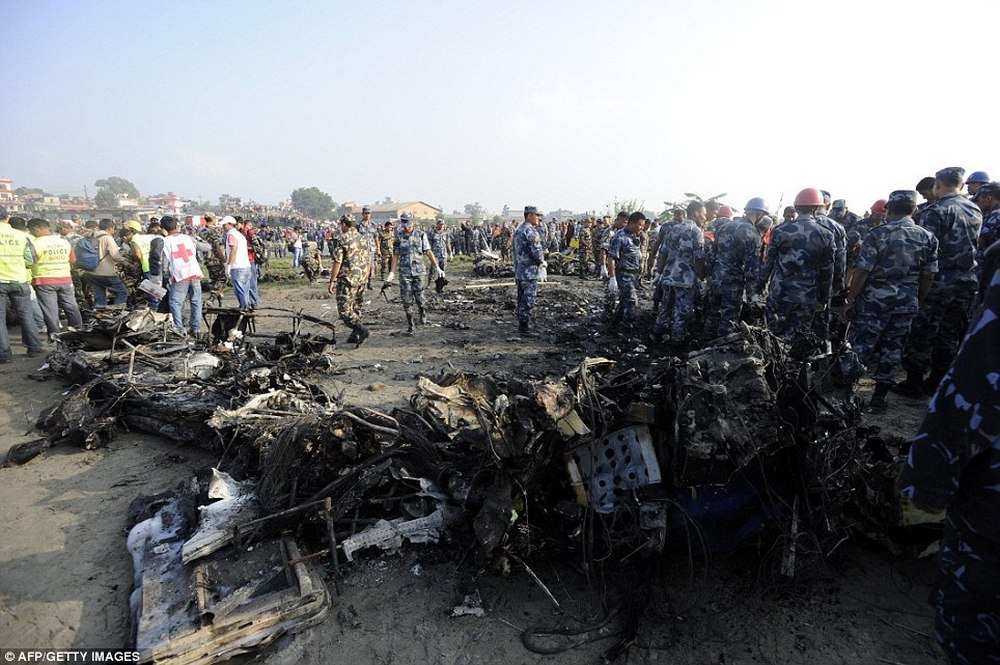
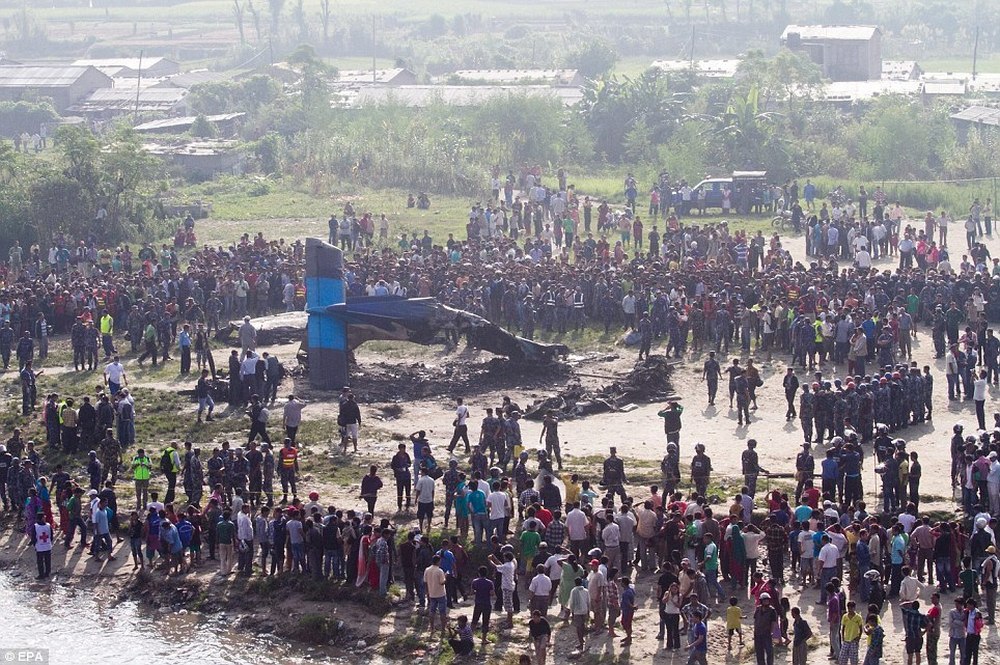
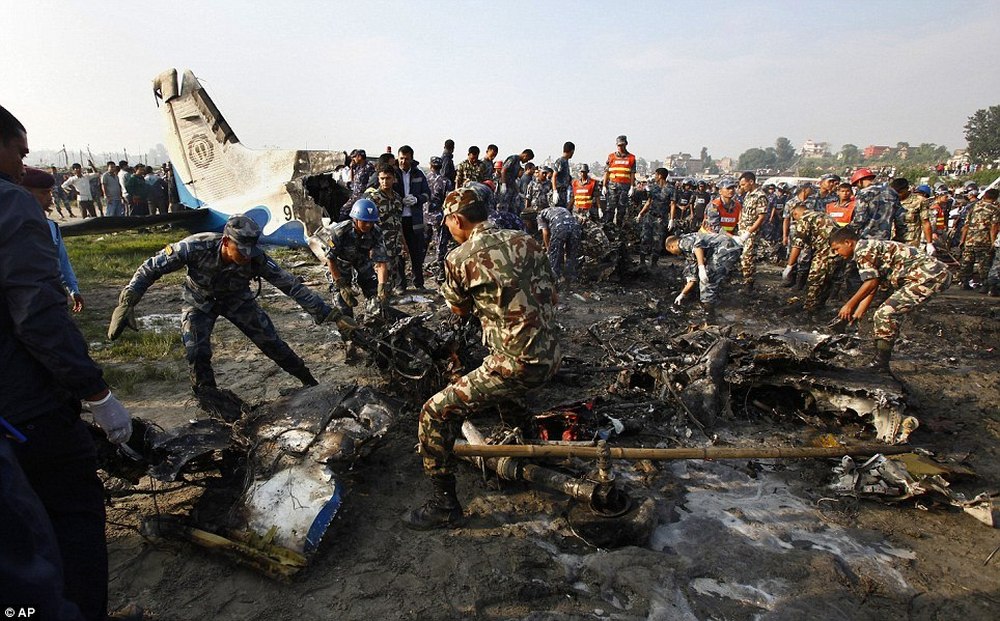
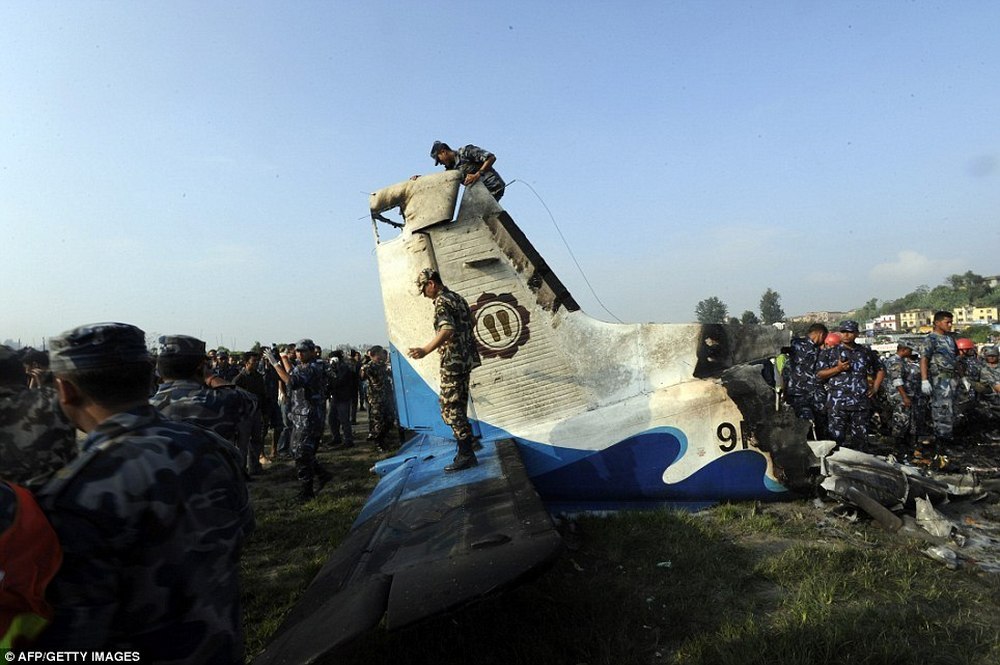
Crash of a Dornier DO228-212 in Jomsom: 15 killed
Date & Time:
May 14, 2012 at 0945 LT
Registration:
9N-AIG
Survivors:
Yes
Schedule:
Pokhara - Jomsom
MSN:
8216
YOM:
1997
Flight number:
AG-CHT
Crew on board:
3
Crew fatalities:
Pax on board:
18
Pax fatalities:
Other fatalities:
Total fatalities:
15
Captain / Total hours on type:
596.00
Circumstances:
On final approach to Jomsom Airport runway 06, the crew lowered the landing gear when they noticed a technical issue. On short final, the captain decided to initiate a go-around procedure and to divert to Pokhara. He made a sharp U-turn to the left at a speed of 73 knots when the left wing impacted a rocky hill located 270 meters above the runway 24 threshold. The aircraft stalled and crashed on the slope of the hill and was destroyed by impact forces. The stewardess and five passengers were seriously injured while all 15 other occupants, among them both pilots, were killed.
Probable cause:
The captain took the decision to make a sharp turn to the left at 73 knots without considering the turn radial and the rising terrain, which resulted in a continuous stall warning during the remaining 12 seconds of flight. The left hand wing of the aircraft struck a rock and the aircraft crashed. The decision of the captain to initiate a turn to the left at this stage of the flight was against all published procedures. It was reported that the commander was a senior flight instructor employed by the Civil Aviation Authority of Nepal.
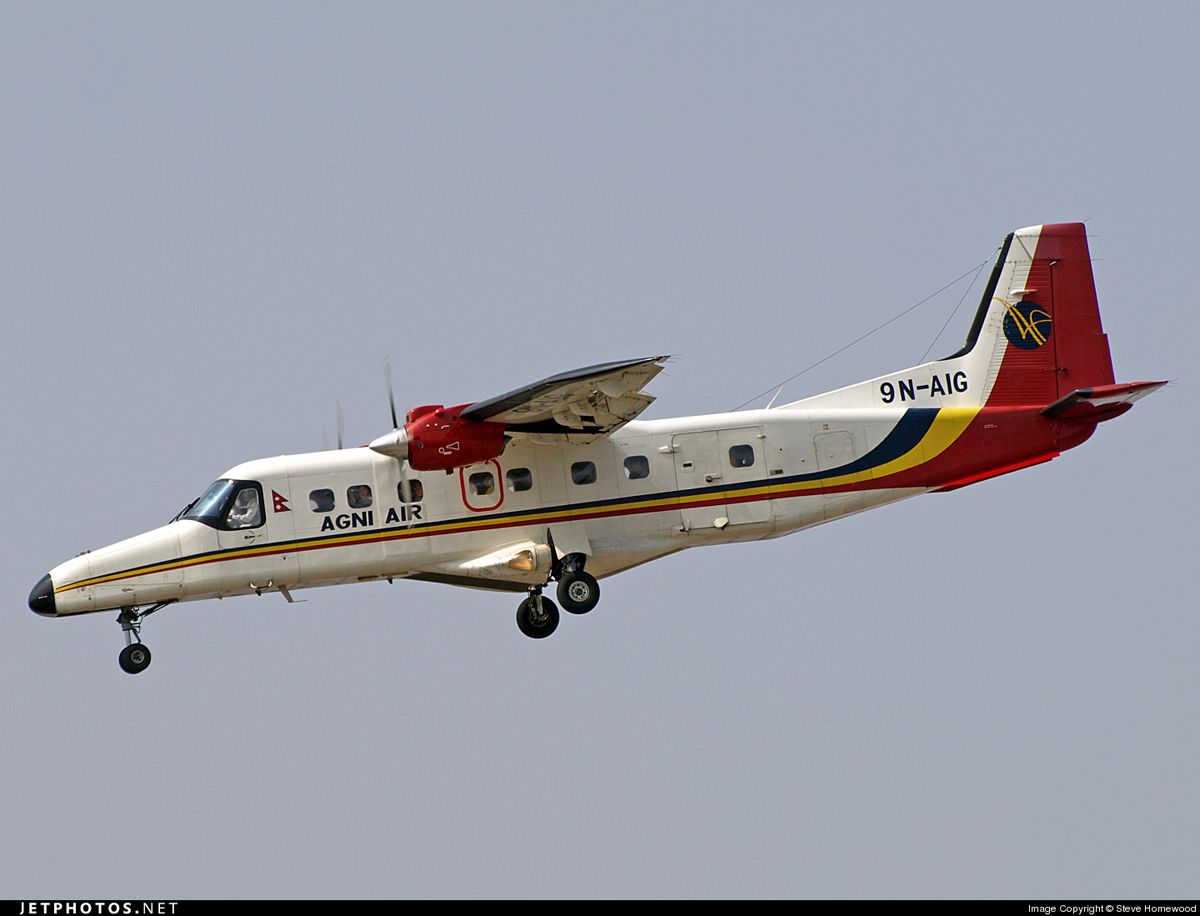
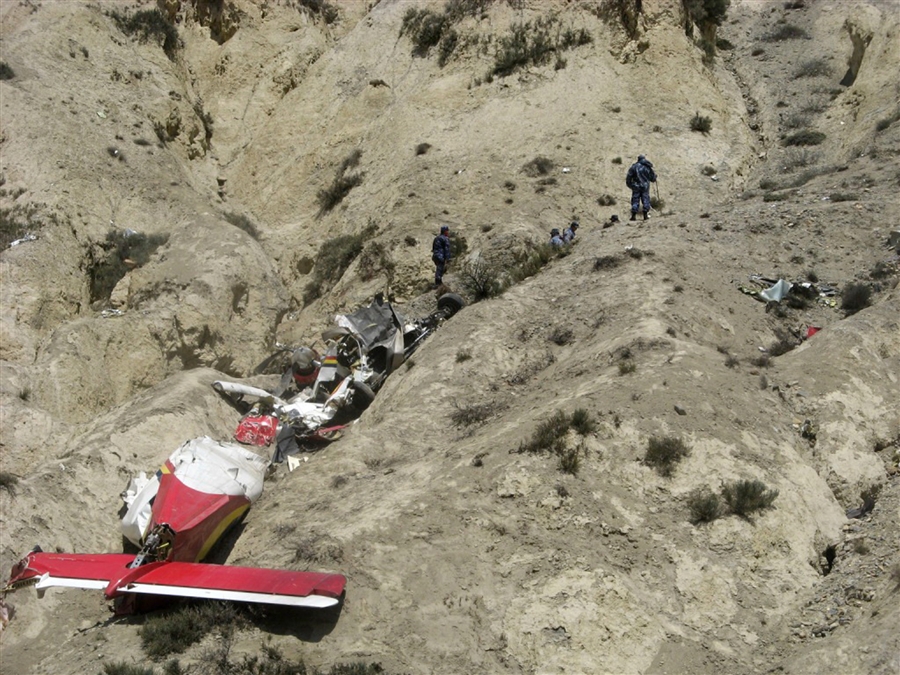
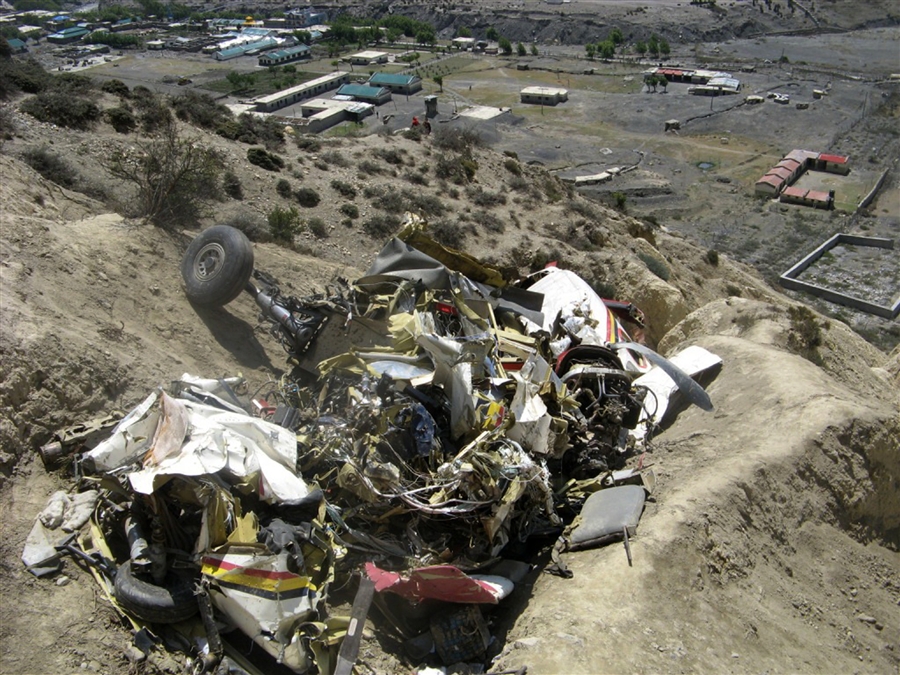
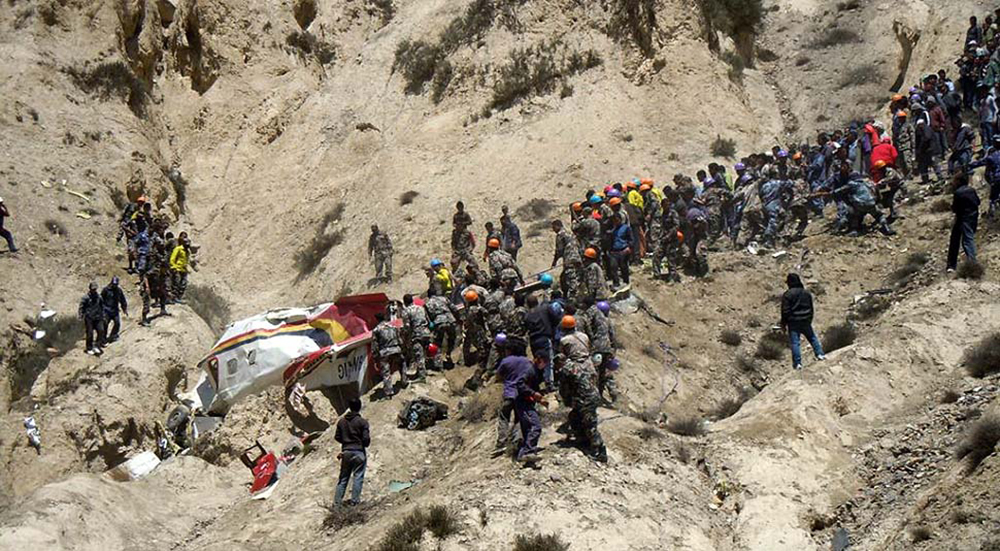
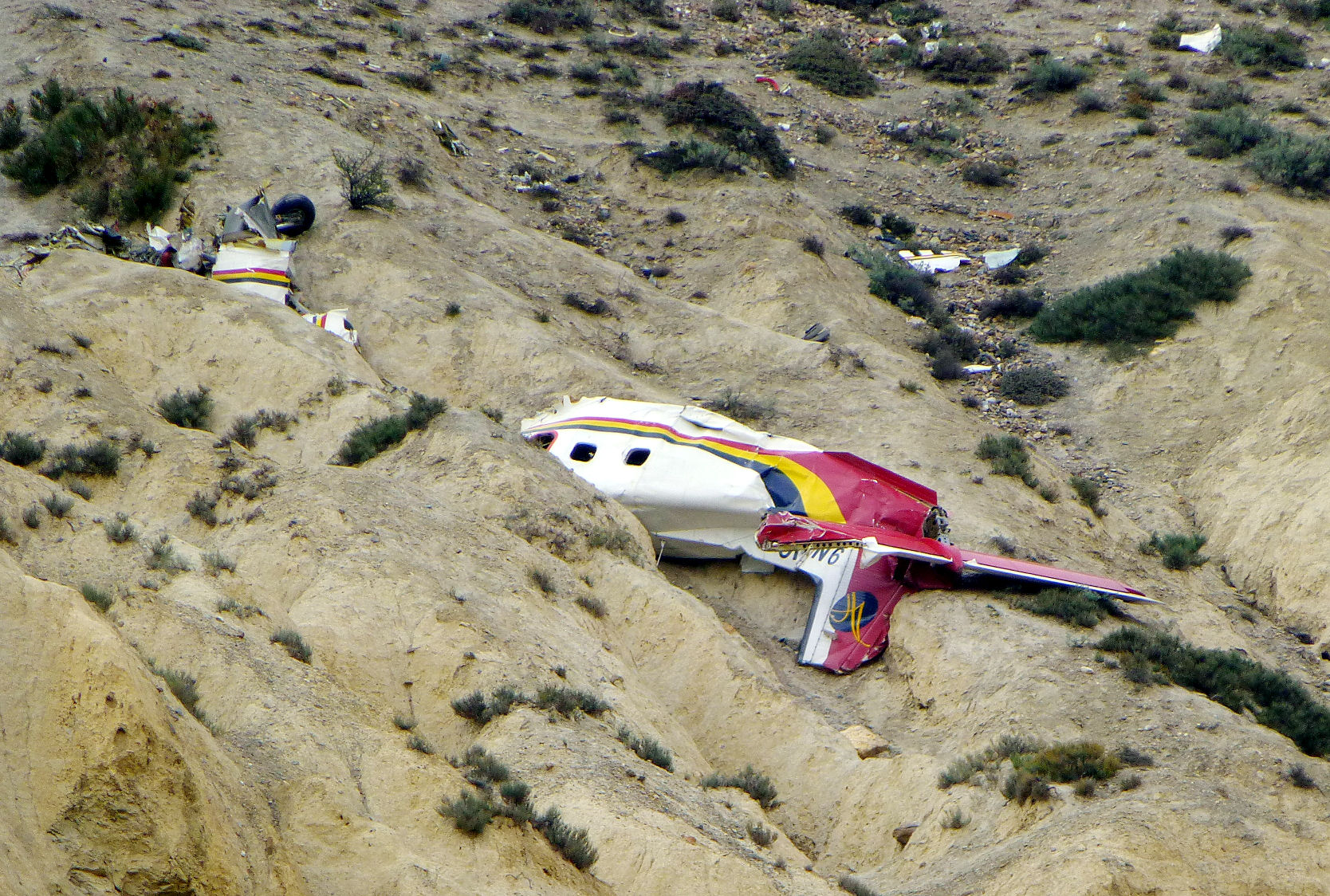
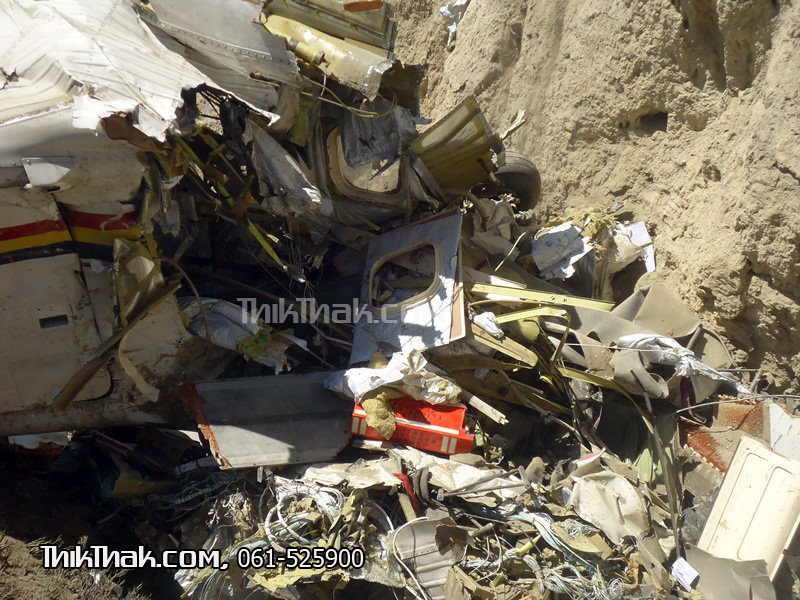
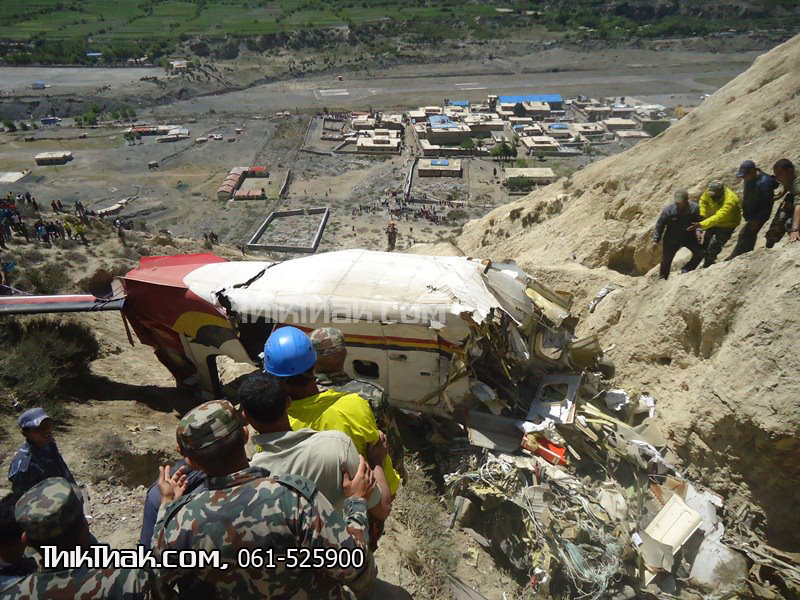
Crash of a Dornier DO228-101 near Kathmandu: 14 killed
Date & Time:
Aug 24, 2010 at 0725 LT
Registration:
9N-AHE
Survivors:
No
Schedule:
Kathmandu - Lukla
MSN:
7032
YOM:
1985
Flight number:
AG101
Crew on board:
2
Crew fatalities:
Pax on board:
12
Pax fatalities:
Other fatalities:
Total fatalities:
14
Circumstances:
On approach to Lukla, the crew encountered poor weather conditions. Unable to locate the runway, he decided to divert to Simara Airport. Unfortunately, the visibility at Simara Airport was insufficient and the crew eventually decided to return to Kathmandu. While descending to runway 02, a generator failed. The crew did not declare an emergency, contacted his maintenance base and was unable to switch to the backup generator. Shortly after the crew elected to reset the battery system, the aircraft entered an uncontrolled descent and crashed in a rice paddy field. The aircraft disintegrated on impact and all 14 occupants were killed, among them 4 Americans, one British and one Japanese. The wreckage was found about 30 km southeast of Tribhuvan Airport.
Probable cause:
Loss of control on approach following the failure of a generator for undetermined reasons.
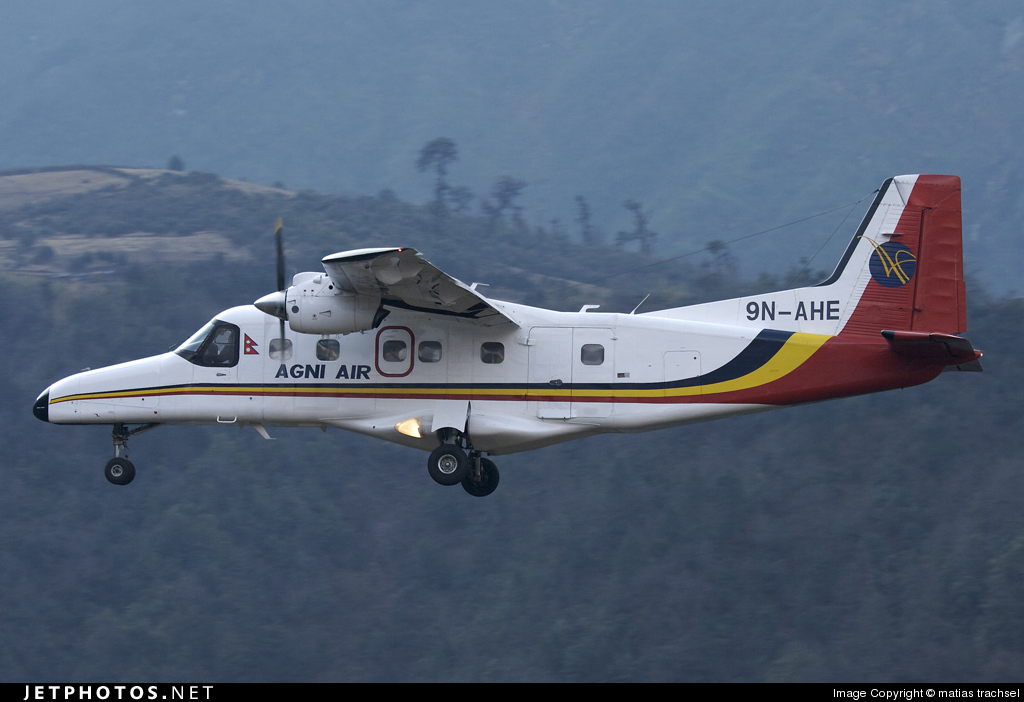
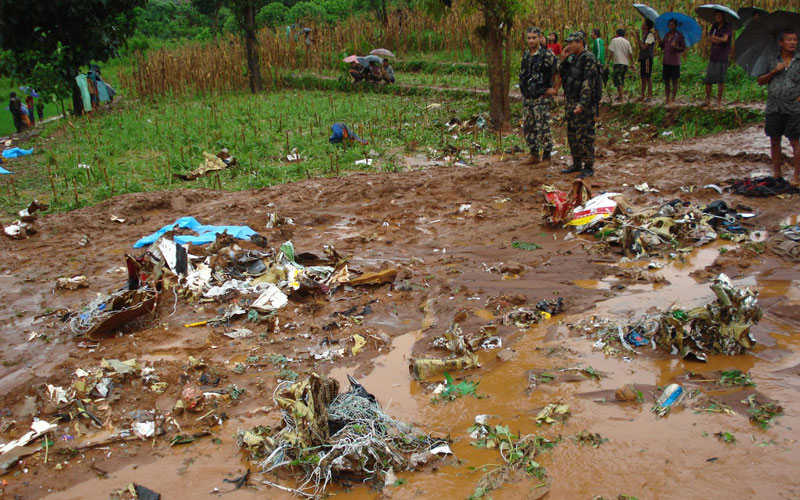
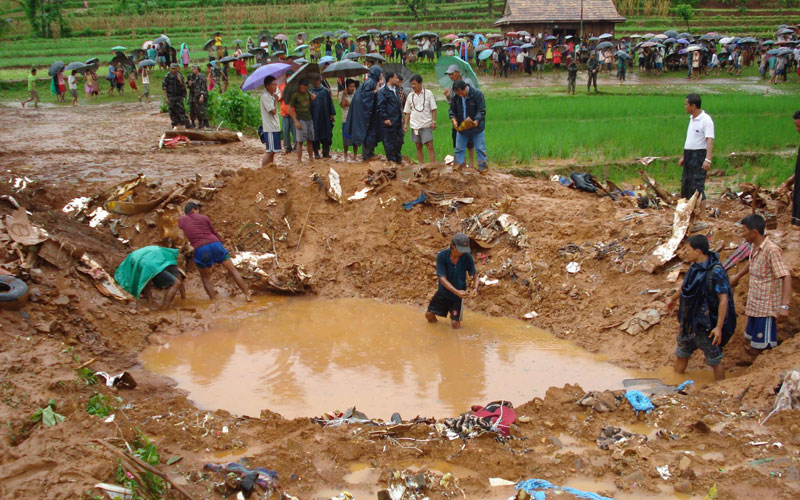
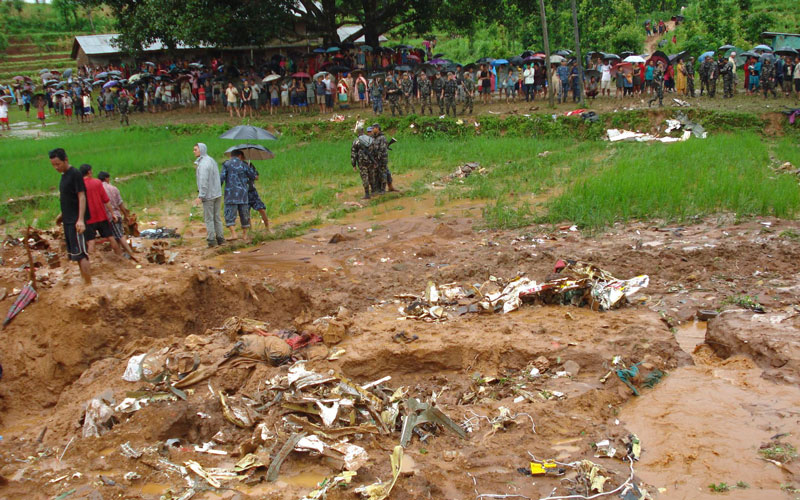
Crash of a Dornier DO228-202 in Cambridge Bay
Date & Time:
Dec 13, 2008 at 0143 LT
Registration:
C-FYEV
Survivors:
Yes
Schedule:
Resolute Bay - Cambridge Bay
MSN:
8133
YOM:
1987
Crew on board:
2
Crew fatalities:
Pax on board:
12
Pax fatalities:
Other fatalities:
Total fatalities:
0
Captain / Total hours on type:
802.00
Copilot / Total hours on type:
470
Circumstances:
The Summit Air Charters Dornier 228-202 was on a charter flight from Resolute Bay to Cambridge Bay, Nunavut, under instrument flight rules. While on final approach to Runway 31 True, the aircraft collided with the ground approximately 1.5 nautical miles from the threshold at 0143 mountain standard time. Of the 2 pilots and 12 passengers on board, 2 persons received serious injuries. The aircraft was substantially damaged. The emergency locator transmitter activated, and the crew notified the Cambridge Bay Airport radio operator of the accident via the aircraft radio. Local ground search efforts found the aircraft within 30 minutes, and all occupants were removed from the site within two hours.
Probable cause:
Findings as to Causes and Contributing Factors:
1. An abbreviated visual approach was conducted at night in instrument meteorological conditions, which resulted in the flight crew’s inability to obtain sufficient visual reference to judge their height above the ground.
2. The flight crew did not monitor pressure altimeter readings or reference the minimum altitude requirements in relation to aircraft position on the approach, resulting in controlled flight into terrain.
3. The pilots had not received training and performance checks for the installed global positioning system (GPS) equipment, and were not fully competent in its use. The attempts at adjusting the settings likely distracted the pilots from maintaining the required track and ground clearance during the final approach.
Findings as to Risk:
1. The precision approach path indicator systems (PAPI) at Cambridge Bay had not been inspected in accordance with the Airport Safety Program Manual. Although calibration of the equipment did not have a bearing on this occurrence, there was an increased risk of aircraft misalignment from the proper glide path, especially during night and reduced visibility conditions.
2. The flight crew’s cross-check of barometric altimeter performance was not sufficient to detect which instrument was inaccurate. As a result, reference was made to a defective altimeter, which increased the risk of controlled flight into terrain.
3. Operators’ maintenance organizations normally do not have access to the troubleshooting information contained in Component Maintenance Instruction Manuals for the Intercontinental Dynamics Corporation altimeters. Therefore, aircraft could be dispatched with damaged instruments with the potential for developing a loss of calibration during flight.
4. The flight was conducted during a period in which the crew’s circadian rhythm cycle could result in cognitive and physical performance degradation unless recognized and managed.
1. An abbreviated visual approach was conducted at night in instrument meteorological conditions, which resulted in the flight crew’s inability to obtain sufficient visual reference to judge their height above the ground.
2. The flight crew did not monitor pressure altimeter readings or reference the minimum altitude requirements in relation to aircraft position on the approach, resulting in controlled flight into terrain.
3. The pilots had not received training and performance checks for the installed global positioning system (GPS) equipment, and were not fully competent in its use. The attempts at adjusting the settings likely distracted the pilots from maintaining the required track and ground clearance during the final approach.
Findings as to Risk:
1. The precision approach path indicator systems (PAPI) at Cambridge Bay had not been inspected in accordance with the Airport Safety Program Manual. Although calibration of the equipment did not have a bearing on this occurrence, there was an increased risk of aircraft misalignment from the proper glide path, especially during night and reduced visibility conditions.
2. The flight crew’s cross-check of barometric altimeter performance was not sufficient to detect which instrument was inaccurate. As a result, reference was made to a defective altimeter, which increased the risk of controlled flight into terrain.
3. Operators’ maintenance organizations normally do not have access to the troubleshooting information contained in Component Maintenance Instruction Manuals for the Intercontinental Dynamics Corporation altimeters. Therefore, aircraft could be dispatched with damaged instruments with the potential for developing a loss of calibration during flight.
4. The flight was conducted during a period in which the crew’s circadian rhythm cycle could result in cognitive and physical performance degradation unless recognized and managed.
Final Report:
